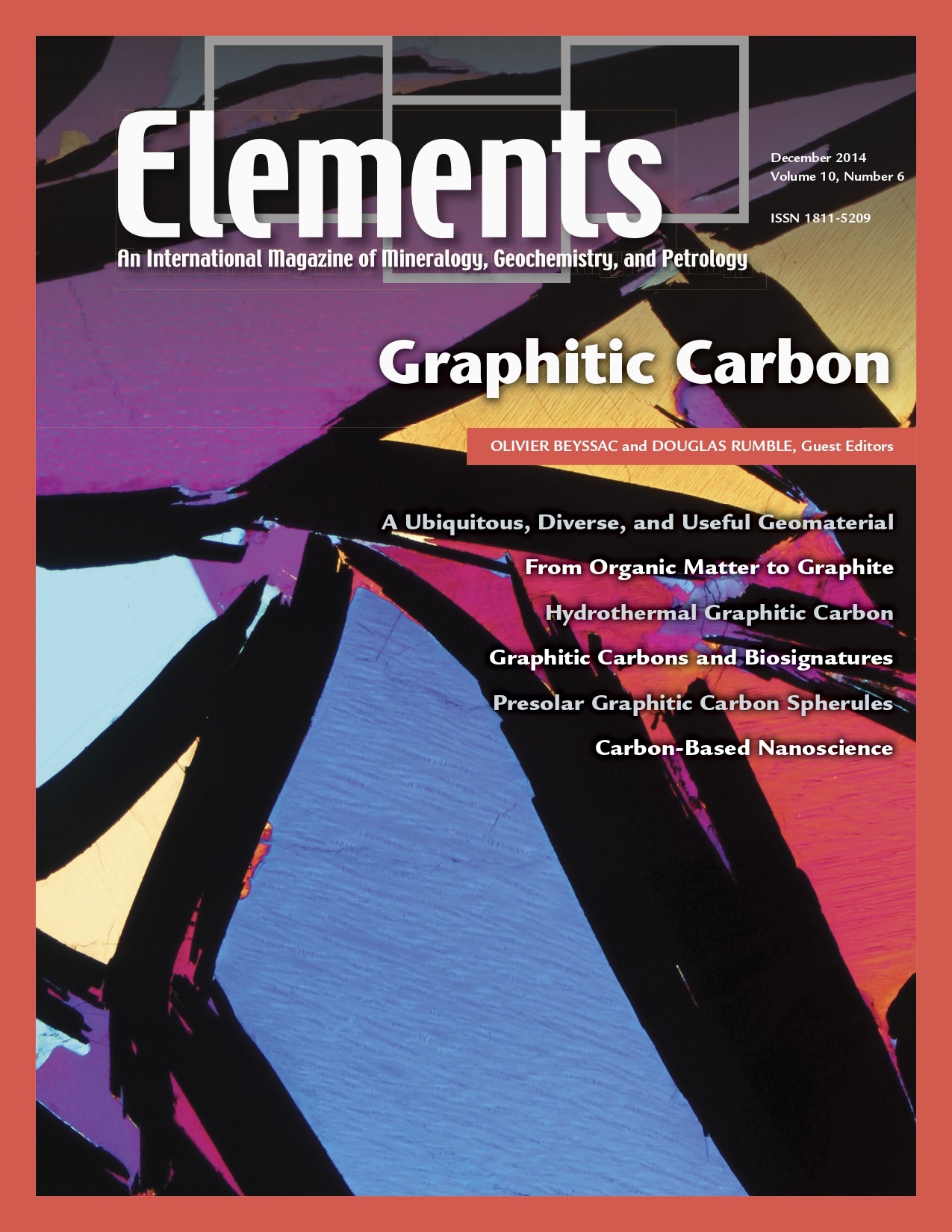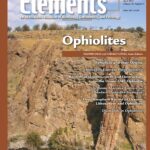Graphitic Carbon, December 2014, Vol. 10, No. 6
$20.00
In natural systems, graphitic carbons are widespread and exhibit an infinite range of structure, from amorphous-like compounds (e.g.
Graphitic Carbon
December 2014, Vol. 10, No. 6
In natural systems, graphitic carbons are widespread and exhibit an infinite range of structure, from amorphous-like compounds (e.g. soots, charcoal) to crystalline graphite through a myriad of turbostratic structures (e.g. coals, kerogens). A variety of structures and chemistries down to the nanometer scale control the physicochemical properties of graphitic carbons and determine their behavior and fate during geological processes. This issue of Elements presents recent advances in our understanding of the formation of graphitic carbons (graphitization, fluid deposition) and discusses their role as actors and/or tracers in cosmochemistry, geobiology, geochemistry, and petrology. In particular, graphitic carbons may carry an important biological legacy in rocks, they may be used for assessing the thermal history of rocks, and they buffer the chemical composition of fluids in equilibrium with rocks. The issue also presents an introduction to the new carbon nanomaterials (e.g. graphene, carbon nanotubes), which bear structural similarities to natural graphitic carbons, and to their technological applications.
Why You’ll Love Elements Magazine:
- Expert Contributors: Articles written by renowned researchers in the field of geoscience.
- Engaging Content: Join a community of readers who are passionate about Elements.
- Exceptional Quality: Each issue is printed on high-quality paper with stunning visuals and detailed illustrations that bring complex scientific concepts to life.
Order your copy of the December 2014 issue of Elements magazine today and discover graphitic carbon.
Related products
-
Glasses And Melts: Linking Geochemistry And Materials Science, October 2006, Vol. 2, No. 5
$20.00Geological interest in studying melts stems from early recognition that melts play a fundamental role in determining the physical and chemical behaviour of magmas and magmatic processes. However, due to the inherent difficulties associated with working at high temperatures, much of the geological research over the last 30 years has used quenched melts or glasses as proxies for melts themselves.
-
Zircon – Tiny But Timely, February 2007, Vol. 3, No. 1
$20.00Where would Earth science be without zircon? As Earth’s timekeeper, zircon has proven to be a remarkable and versatile mineral, providing insights into deep time and ancient Earth processes. However, there is still much to learn about Earth’s history from zircon and its behaviour.
-
Water On Mars, June 2006, Vol. 2, No. 3
$20.00During the past several decades, spacecraft data have transformed the planets from astronomical objects into geologic worlds. Mars is the current focus of planetary exploration, and NASA’s objectives for this effort are based on the theme, “follow the water.






